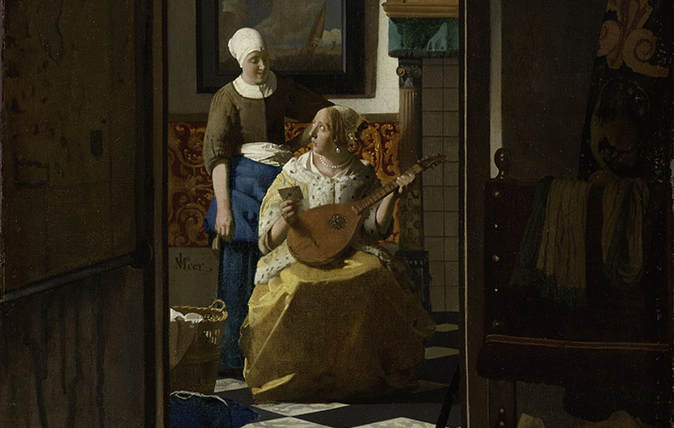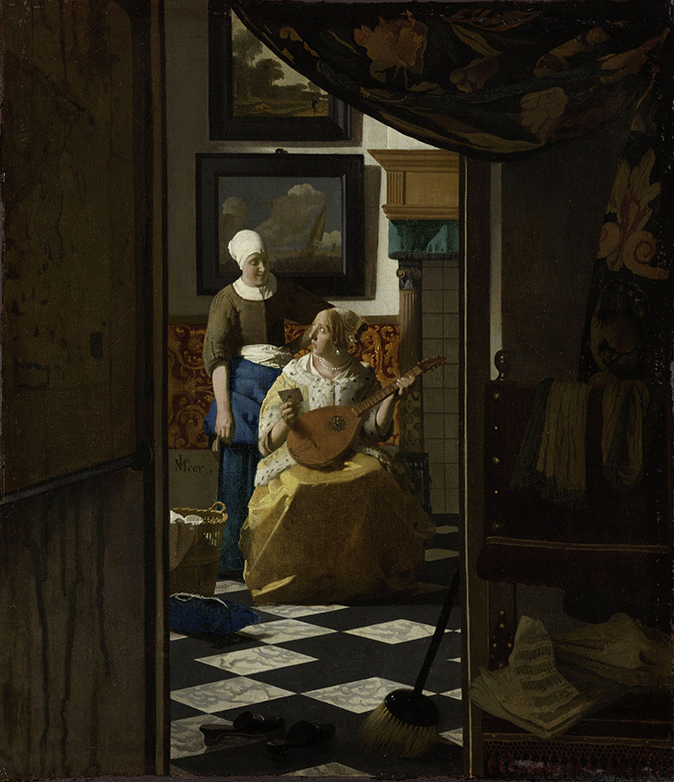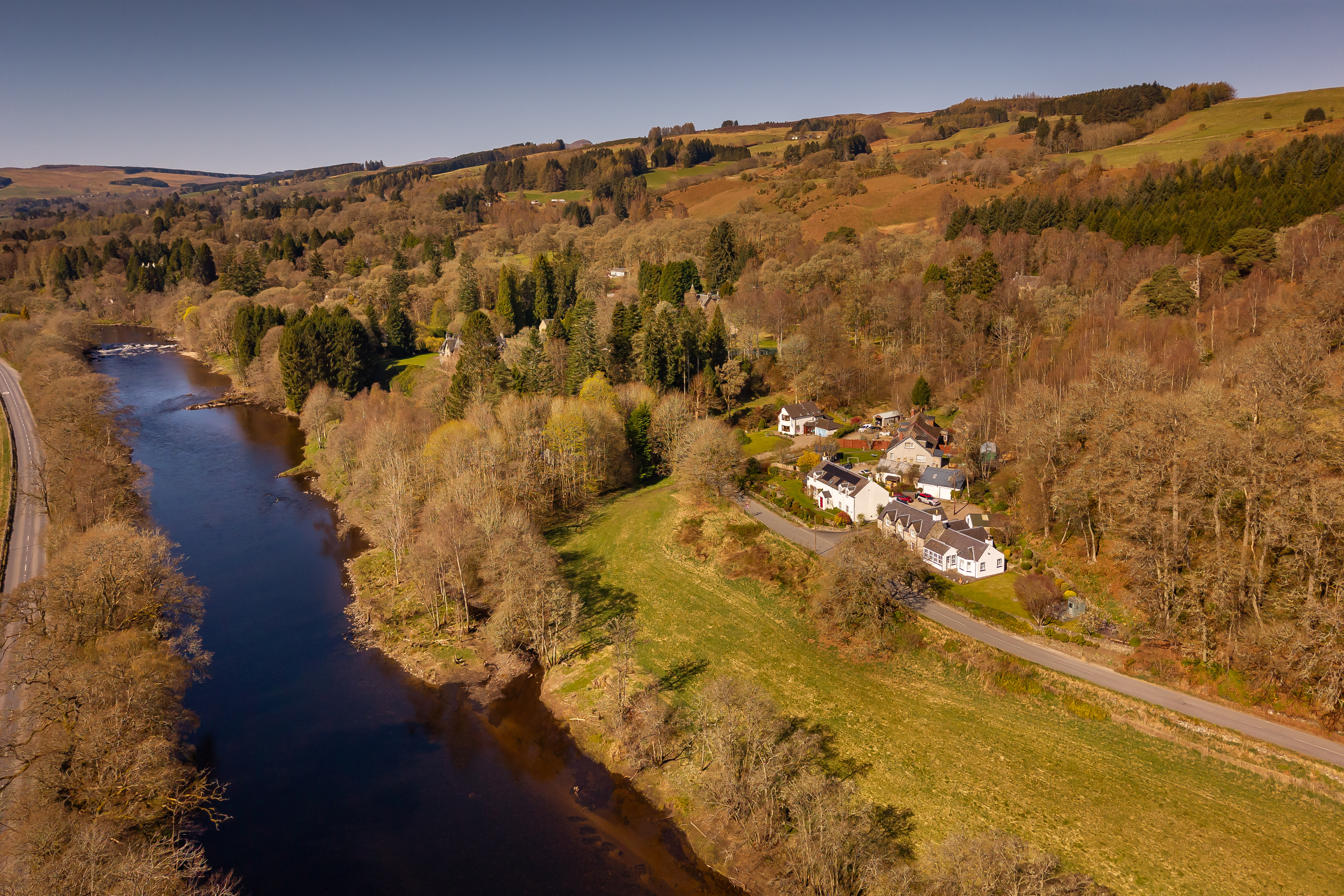My favourite painting: Michael Chance
'This is a whole operatic scene, full of drama and beauty, crying out for enactment at The Grange'



The Love Letter, 1669–70, by Johannes Vermeer (1632–75), 18¼in by 15¾in, Rijksmuseum, Amsterdam, The Netherlands
Michael Chance says: Singing Elizabethan lute songs around the world has been a thoroughly enjoyable part of my performing life. They are intense private expressions of passion, full of wit and delicious conceits. I love how the lutenist in this engrossing painting leaves her left hand still in correct position while looking up, a little startled, as the maid gives her the letter. The contents are likely to match both the intimacy of the scene on which Vermeer invites us secretly to eavesdrop and the essence of the music so recently interrupted. This is a whole operatic scene, full of drama and beauty, crying out for enactment at The Grange.’
Michael Chance is an internationally renowned countertenor and teacher and the Artistic Director of The Grange Festival, which opens its first season June 7, 2017
John McEwen comments on The Love Letter: Vermeers are a popular choice for this page. Neglected for two centuries, his paintings certainly con- form to the Modernist taste for order and restraint, for the formal qualities of a picture more than the story it tells. Vermeer does not tell stories. This is an exception.
The pictures within the picture signal that the letter, delivered by the maid, is a love letter. The seascape is the first clue. In the 17th century, the sea was often poetically equated with love, the lover with a ship. The allusion is emphasised by the landscape with its wanderer, another poetic image of love. Both ship and wanderer speak of exile and yearning for reunion.
Dutch pictures of this, the Golden Age of Dutch art—a consequence of the apogee of the marine and mercantile power of the Netherlands—are loaded with symbols and the spoils of imperial success. The pictures have frames made from ebony imported from the Dutch East Indies and the marble, luxurious curtain and the mistress’s silk dress all suggest foreign imports. The pictures themselves are testimony to solid burgher prosperity, the product of international dominance, from which Vermeer, as artist and dealer, benefited.
However, that does not explain the skill that magically transforms this mundane scene. For that, one must consider the rendering of the battered and stained woodwork. The subtle geometries that harmonise the severe lines framing the door with the whole. The sumptuous curtain that, when dropped, will stifle the keenest draught. The touches of colour, the play of light that, with the broom and discarded slippers, lend their own vernal symbolism to the scene.
Sign up for the Country Life Newsletter
Exquisite houses, the beauty of Nature, and how to get the most from your life, straight to your inbox.
Country Life is unlike any other magazine: the only glossy weekly on the newsstand and the only magazine that has been guest-edited by HRH The King not once, but twice. It is a celebration of modern rural life and all its diverse joys and pleasures — that was first published in Queen Victoria's Diamond Jubilee year. Our eclectic mixture of witty and informative content — from the most up-to-date property news and commentary and a coveted glimpse inside some of the UK's best houses and gardens, to gardening, the arts and interior design, written by experts in their field — still cannot be found in print or online, anywhere else.
-
 Vertigo at Victoria Falls, a sunset surrounded by lions and swimming in the Nile: A journey from Cape Town to Cairo
Vertigo at Victoria Falls, a sunset surrounded by lions and swimming in the Nile: A journey from Cape Town to CairoWhy do we travel and who inspires us to do so? Chris Wallace went in search of answers on his own epic journey the length of Africa.
By Christopher Wallace
-
 A gorgeous Scottish cottage with contemporary interiors on the bonny banks of the River Tay
A gorgeous Scottish cottage with contemporary interiors on the bonny banks of the River TayCarnliath on the edge of Strathtay is a delightful family home set in sensational scenery.
By James Fisher
-
 'As a child I wanted to snuggle up with the dogs and be part of it': Alexia Robinson chooses her favourite painting
'As a child I wanted to snuggle up with the dogs and be part of it': Alexia Robinson chooses her favourite paintingAlexia Robinson, founder of Love British Food, chooses an Edwin Landseer classic.
By Charlotte Mullins
-
 The Pre-Raphaelite painter who swapped 'willowy, nubile women' for stained glass — and created some of the best examples in Britain
The Pre-Raphaelite painter who swapped 'willowy, nubile women' for stained glass — and created some of the best examples in BritainThe painter Edward Burne-Jones turned from paint to glass for much of his career. James Hughes, director of the Victorian Society, chooses a glass masterpiece by Burne-Jones as his favourite 'painting'.
By Charlotte Mullins
-
 'I can’t look away. I’m captivated': The painter who takes years over each portrait, with the only guarantee being that it won't look like the subject
'I can’t look away. I’m captivated': The painter who takes years over each portrait, with the only guarantee being that it won't look like the subjectFor Country Life's My Favourite Painting slot, the writer Emily Howes chooses a work by a daring and challenging artist: Frank Auerbach.
By Toby Keel
-
 My Favourite Painting: Rob Houchen
My Favourite Painting: Rob HouchenThe actor Rob Houchen chooses a bold and challenging Egon Schiele work.
By Charlotte Mullins
-
 My Favourite Painting: Jeremy Clarkson
My Favourite Painting: Jeremy Clarkson'That's why this is my favourite painting. Because it invites you to imagine'
By Charlotte Mullins
-
 The chair of the National Gallery names his favourite from among the 2,300 masterpieces — and it will come as a bit of a shock
The chair of the National Gallery names his favourite from among the 2,300 masterpieces — and it will come as a bit of a shockAs the National Gallery turns 200, the chair of its board of trustees, John Booth, chooses his favourite painting.
By Toby Keel
-
 'A wonderful reminder of what the countryside could and should be': The 200-year-old watercolour of a world fast disappearing
'A wonderful reminder of what the countryside could and should be': The 200-year-old watercolour of a world fast disappearingChristopher Price of the Rare Breed Survival Trust on the bucolic beauty of The Magic Apple Tree by Samuel Palmer, which he nominates as his favourite painting.
By Charlotte Mullins
-
 My favourite painting: Andrew Graham-Dixon
My favourite painting: Andrew Graham-Dixon'Lesson Number One: it’s the pictures that baffle and tantalise you that stay in the mind forever .'
By Country Life